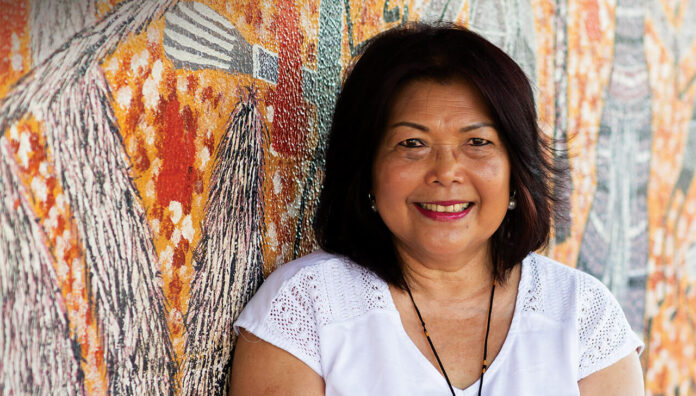Indie-Phet Nguyen MPS studied by candlelight to finish school and came to Australia on a Colombo Plan scholarship in 1975. She loves her life as a locum.
What was in like coming to Australia post-Vietnam war?
There weren’t a lot of Asian people in Australia at the time, so coming to a Western country was a bit of a struggle for the first year. The culture, food and language are all very different, so it took some time to adapt to life here.
Why did you choose pharmacy?
When I arrived in Australia, I received two scholarships – one in medicine, the other in pharmacy. Coming from a tiny country like Laos, I had to learn a lot of languages to survive – Lao, French, Thai, and Vietnamese. But English was just a hobby language that I didn’t speak very well.
After 3 months here, we had to sit an English test, which around 70% of the Colombo Scholarship recipients failed. I thought my level of English might be better suited to pharmacy, so I accepted a place at the University of South Australia’s School of Pharmacy.
While separated from my other Colombo colleagues, who remained in Sydney, I loved studying pharmacy. Back then, we trained to serve the community in a practical way. I learned a lot about medicines through compounding. For example, when making a cream mixture, we needed to create ways to improve the texture of the cream.
What do you enjoy most about working as a locum?
Locum pharmacists have far fewer financial responsibilities. Rather than worrying about a business’s bottom line, I get to spend more time with patients in the pharmacy. Each place I go, I make sure to study the demographics of the population. For example, if they are of low or high socioeconomic status, and what kind of diseases they have. This helps me to understand some of the reasons why certain populations appear happier and healthier than others. I also love travelling, particularly when I get to spend time at the beach.
What took you to Katherine in the Northern Territory?
Basically, a leap of faith. The pharmacy where I am working had been asking me to come up for almost 2 years. Eventually I thought, ‘why not? I can always turn back if I don’t like it’. After around 3 weeks, I fell in love with the place – it’s so different to what I’m used to, and far more challenging. I’ve been here for around 6 months, and plan to stay longer – if I can get some pharmacy interns to come up here.
Who are your main patients?
I work with a lot of First Nations people. Many of them are quite unwell, and I have been trying to understand why that’s the case. More than 50% of the population have type 2 diabetes and many are born with kidney impairment.
Medication adherence is also very poor. Some patients can go weeks without taking their medicines and end up in hospital. When I was here for 6 weeks, I was invited to meet most of the GPs in town. Now that I have a relationship with at least 80% of the GPs here, I’ve been doing MedsChecks and sending notes back to the prescribers.
Now that I know a lot more about the health issues the people here face, I will meet them again sometime next year to discuss where we can go from here.
What’s satisfying about your new role?
Most patients’ medication adherence has improved. They understand they can’t miss doses, especially if they are taking more than one blood-clotting medicine. I also remind them that they can’t go more than 6 months without a medication review.
The next step I’d like to take is working with the government to improve access to drinking water on the streets of Katherine. Overall, my patients are starting to realise that I’m always here to help.






 ‘We’re increasingly seeing incidents where alert fatigue has been identified as a contributing factor. It’s not that there wasn’t an alert in place, but that it was lost among the other alerts the clinician saw,’ Prof Baysari says.
‘We’re increasingly seeing incidents where alert fatigue has been identified as a contributing factor. It’s not that there wasn’t an alert in place, but that it was lost among the other alerts the clinician saw,’ Prof Baysari says.








